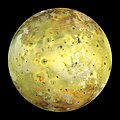
Original file (3,196 × 3,196 pixels, file size: 1.88 MB, MIME type: image/jpeg)
| This is a featured picture, which means that members of the community have identified it as one of the finest images on the English Wikipedia, adding significantly to its accompanying article. If you have a different image of similar quality, be sure to upload it using the proper free license tag, add it to a relevant article, and nominate it. |
| This image was selected as picture of the day on the English Wikipedia for September 8, 2013. |
File history
Click on a date/time to view the file as it appeared at that time.
| Date/Time | Thumbnail | Dimensions | User | Comment | |
|---|---|---|---|---|---|
| current | 06:00, 21 August 2018 |  | 3,196 × 3,196 (1.88 MB) | The NMI User | Reverted to version as of 23:57, 14 July 2018 (UTC): Needs margins from Kaldari because the crops are too close on all sides in this photo. |
| 20:08, 20 August 2018 |  | 2,796 × 2,796 (1.81 MB) | Jdx | Reverted to version as of 18:51, 9 May 2010 (UTC) | |
| 01:55, 6 August 2018 |  | 3,196 × 3,196 (1.88 MB) | Jcpag2010 | Reverted to version as of 23:57, 14 July 2018 (UTC) | |
| 05:40, 2 August 2018 |  | 2,796 × 2,796 (1.81 MB) | PlanetUser | Reverted to version as of 18:51, 9 May 2010 (UTC) | |
| 23:57, 14 July 2018 |  | 3,196 × 3,196 (1.88 MB) | Kaldari | margins | |
| 00:42, 21 December 2015 |  | 2,796 × 2,796 (1.81 MB) | PlanetUser | Reverted to version as of 18:51, 9 May 2010 (UTC) | |
| 19:09, 23 October 2015 |  | 2,952 × 2,940 (1.8 MB) | Jacek Halicki | frame | |
| 18:51, 9 May 2010 |  | 2,796 × 2,796 (1.81 MB) | Julia W | sorry, trying that again | |
| 18:35, 9 May 2010 |  | 2,796 × 2,796 (5.2 MB) | Julia W | fresh conversion to jpeg from tiff, at higher quality | |
| 19:39, 23 April 2006 |  | 2,796 × 2,796 (771 KB) | Uwe W. | Original Caption Released with Image: NASA's Galileo spacecraft acquired its highest resolution images of Jupiter's moon Io on 3 July 1999 during its closest pass to Io since orbit insertion in late 1995. This color mosaic uses the near-infrared, gr |
File usage
More than 100 pages use this file. The following list shows the first 100 pages that use this file only. A full list is available.
- Ah Peku Patera
- Amaterasu Patera
- Asha Patera
- Babbar Patera
- Dazhbog Patera
- Egypt Mons
- Estan Patera
- Fuchi Patera
- Galilean moons
- Gish Bar Patera
- Io (moon)
- Jupiter Icy Moons Orbiter
- Kami-Nari Patera
- Kinich Ahau Patera
- List of Solar System objects by size
- List of geological features on Io
- List of gravitationally rounded objects of the Solar System
- List of mountains on Io
- List of quadrangles on Io
- Loki Patera
- Manua Patera
- Maui Patera
- Mithra Patera
- Monan Patera
- Naming of moons
- New Horizons
- Pele (volcano)
- Pillan Patera
- Pioneer 11
- Pyerun Patera
- Reiden Patera
- Shango Patera
- Silpium Mons
- Sulfur
- Svarog Patera
- Timeline of discovery of Solar System planets and their moons
- Tohil Mons
- Tvashtar Paterae
- Viracocha Patera
- Volcanism on Io
View more links to this file.
Global file usage
The following other wikis use this file:
- Usage on af.wikipedia.org
- Usage on als.wikipedia.org
- Usage on an.wikipedia.org
- Usage on ar.wikipedia.org
- كبريت
- بلوتو
- بوابة:علم الفلك/تصنيفات
- أقمار المشتري
- أقمار غاليليو
- آيو (قمر)
- قالب:المجموعة الشمسية
- قائمة أجرام المجموعة الشمسية مرتبة حسب الحجم
- قائمة الأجرام المستديرة بالجاذبية في المجموعة الشمسية
- قائمة الأقمار الطبيعية
- خط زمني لاكتشاف كواكب المجموعة الشمسية وأقمارها
- اكتشاف واستكشاف النظام الشمسي
- قائمة أنواع الكواكب
- بوابة:المجموعة الشمسية/هل تعلم/2
- مستخدم:ASammour/صور مختارة في الفارسية والتركية
- 1981 ميداس
- مرصد براكين آيو
- Usage on ary.wikipedia.org
- Usage on arz.wikipedia.org
- Usage on ast.wikipedia.org
- Usage on azb.wikipedia.org
- Usage on ba.wikipedia.org
- Usage on be-tarask.wikipedia.org
- Usage on be.wikipedia.org
- Usage on bg.wikipedia.org
- Usage on bh.wikipedia.org
- Usage on bn.wikipedia.org
View more global usage of this file.






